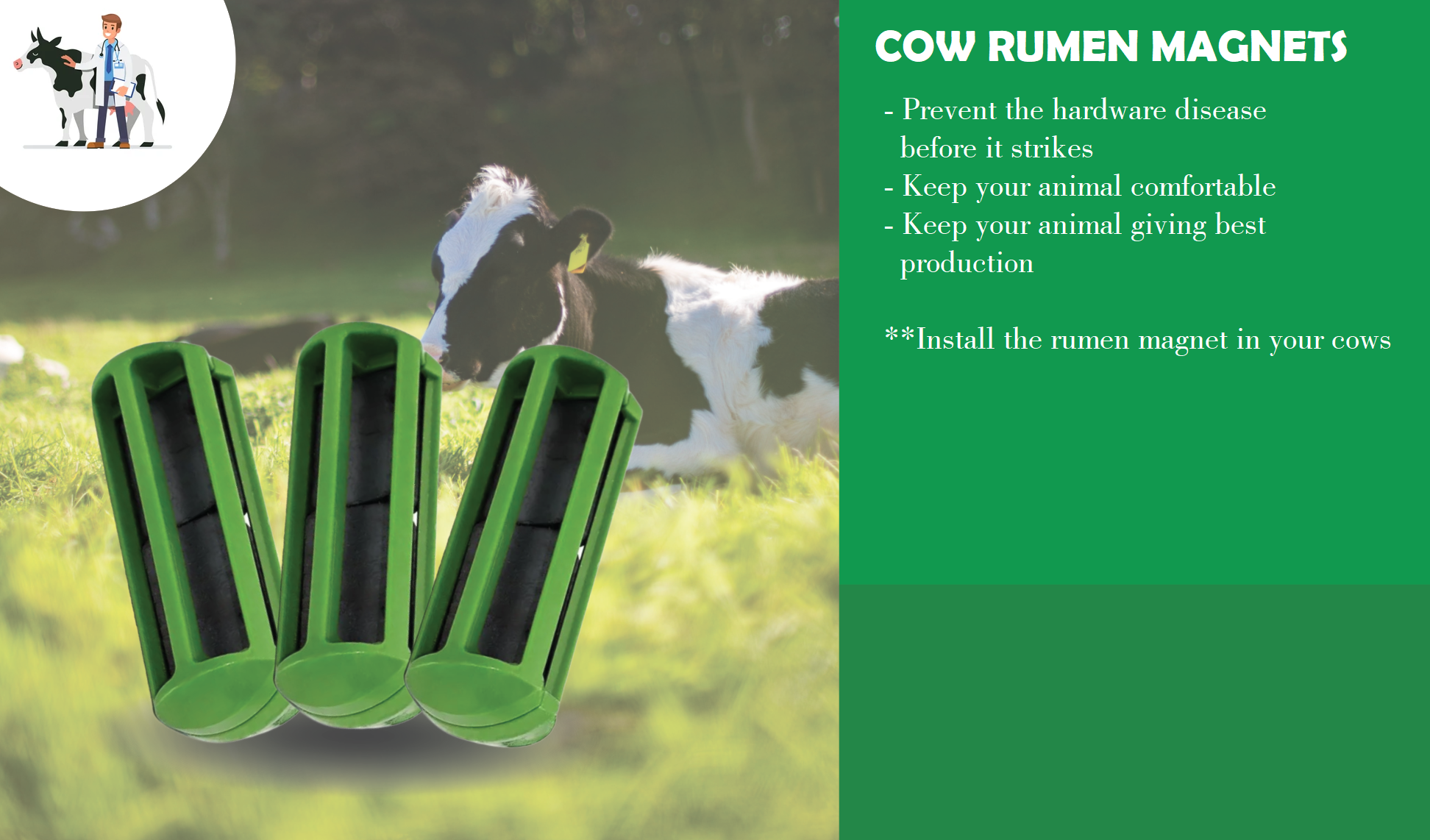WHY COWS NEED MAGNETS IN THE STOMACH Leave a comment
While feeding, cows and indeed most ruminants are not very selective. The fact that the animals pick fodder in tufts and initially swallow without chewing, it is very possible for some small foreign objects to be well hidden and get ingested. Metallic objects (such as wires, nails, scrap metal pieces etc) can find their way into the cow’s fodder, get swallowed and later migrate to other organs by penetrating beyond the second stomach (reticulum) wall. The objects, through tearing tissue can subsequently introduce infection to the abdomen, liver, and pericardial sack around the heart. The condition brought about by such in the abdominal cavity is called traumatic reticuloperitonitis (hardware disease).
When the objects pierce the heart sac, this may lead to another condition called pericarditis (inflammation of the heart wall). The chances of these metallic objects penetrating into the heart are increased by compression of the uterus in late pregnancy, strain during birth and mounting when the cow is on heat.
These conditions are however preventable.
Apart from causing the hardware disease, additionally the metallic objects lodged in an animal’s vital organs do cause discomfort and also lower the production of the affected animal.
To prevent this, a specially designed magnet is introduced into the cow’s first stomach (rumen). The magnet attracts the ferrous metal objects introduced into the rumen before they migrate to other internal body parts, and holds them in a carefully designed sturdy plastic cage for life.
Rumen magnets are thus a cost effective way of minimizing the risk of traumatic reticuloperitonitis which is fatal in most cases.
Diagnosis and Treatment of Hardware Disease
The diagnosis of traumatic reticuloperitonitis can be difficult since a good number of other diseases mimic the same symptoms.
Squeezing the cow’s backbone just above the withers can indicate hardware disease presence. If the animal forcibly grunts during this test, the pain or discomfort can be traced to the front half of the cow, which might indicate that hardware disease could be the main issue.
Observable symptoms may include;
- Slow movement of the animal or total reluctance to move
- Standing with an arched backline
- Groaning while lying down, urinating or passing stool
- Shallow and rapid breathing
- Fever
- Decrease in milk production
When hardware disease is suspected, placing a rumen magnet into the reticulum with a balling gun can sometimes alleviate the problem. Once the rumen magnet settles in the reticulum, often the metallic object(s) will attach, and be drawn away from the stomach wall and held in check by the magnet.
Surgery to physically remove the metallic object(s) can also be considered if the magnet fails to help the problem.
A broad-spectrum antibiotic should be administered to help control infection after the installation of the magnet or surgery. Close confinement of the animal with little movement will give time for the stomach to repair and heal where the tearing of tissue was. Cattle with widespread infection in the abdominal cavity or in the heart have very little chance of recovery, and most will die of starvation in spite of attempts to get them to eat.
Cow rumen magnets therefore function best as a preventative, being installed in healthy cattle before they have ingested any metallic objects or “hardware”. Once metal is ingested, it adheres to the magnet and held in the rumen for the life of the cow and chances of any damage being done are drastically reduced if not totally eliminated.
The magnets should be introduced before the cow attains the age of one year
Before the introduction of the magnet, the cow should be starved for 18-24hours
As a good practice, if the herd is not too big, passing a metal detector over the feed before feeding the animals would also help.
Apart from this major purpose, the magnets can also have a passive RFID chip installed for livestock
identification and records management. Using an RFID reader, an animal with such a magnet can be
identified and its health and breeding records accessed instantly. Unlike external RFID tags that can
get lost or broken, chances of the magnet and subsequently the RFID chip, leaving the rumen are almost nil
From the leading suppliers of rumen magnets in the region
Everland Kilimo Solutions

